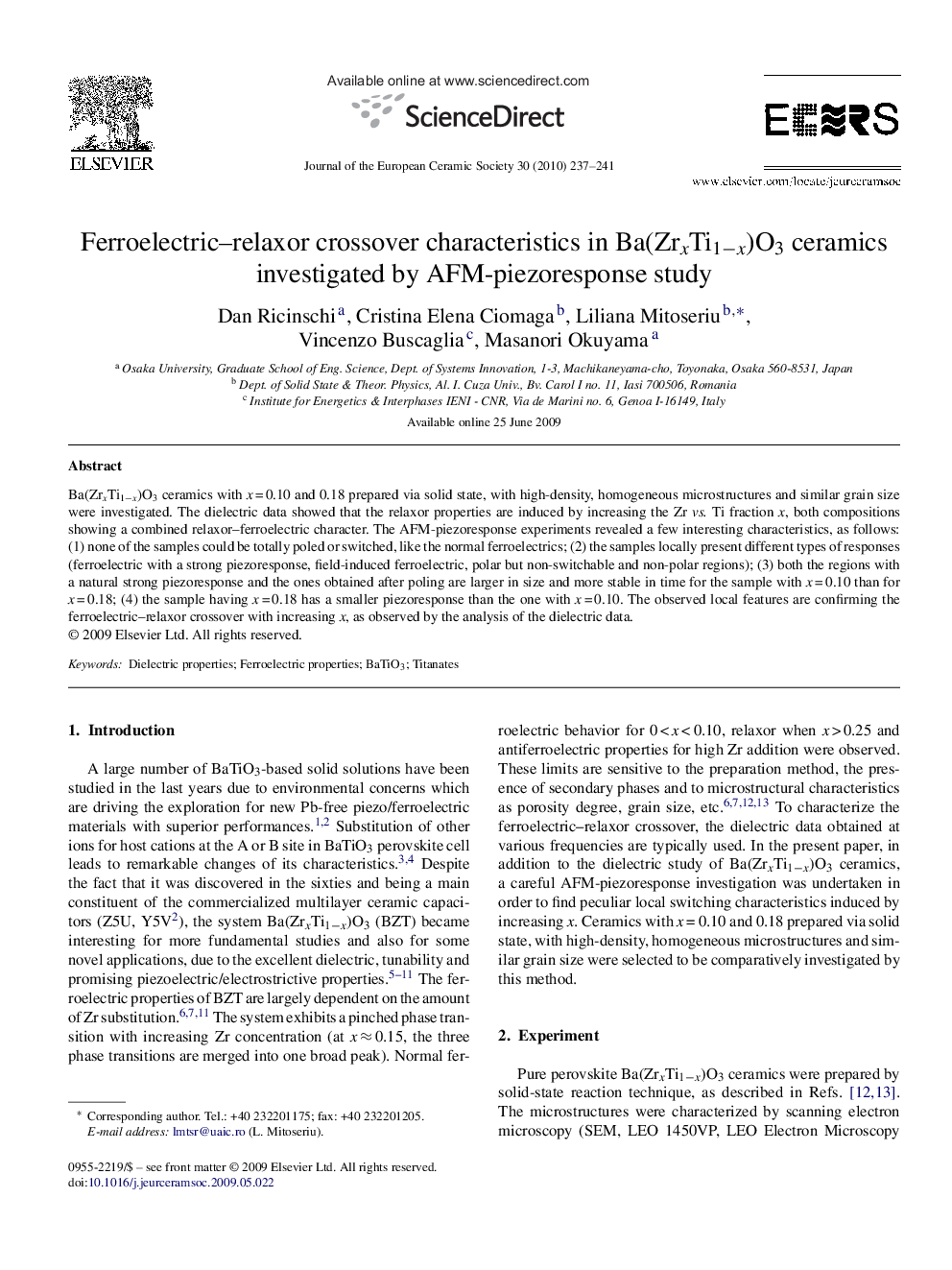| Article ID | Journal | Published Year | Pages | File Type |
|---|---|---|---|---|
| 1474957 | Journal of the European Ceramic Society | 2010 | 5 Pages |
Ba(ZrxTi1−x)O3 ceramics with x = 0.10 and 0.18 prepared via solid state, with high-density, homogeneous microstructures and similar grain size were investigated. The dielectric data showed that the relaxor properties are induced by increasing the Zr vs. Ti fraction x, both compositions showing a combined relaxor–ferroelectric character. The AFM-piezoresponse experiments revealed a few interesting characteristics, as follows: (1) none of the samples could be totally poled or switched, like the normal ferroelectrics; (2) the samples locally present different types of responses (ferroelectric with a strong piezoresponse, field-induced ferroelectric, polar but non-switchable and non-polar regions); (3) both the regions with a natural strong piezoresponse and the ones obtained after poling are larger in size and more stable in time for the sample with x = 0.10 than for x = 0.18; (4) the sample having x = 0.18 has a smaller piezoresponse than the one with x = 0.10. The observed local features are confirming the ferroelectric–relaxor crossover with increasing x, as observed by the analysis of the dielectric data.
